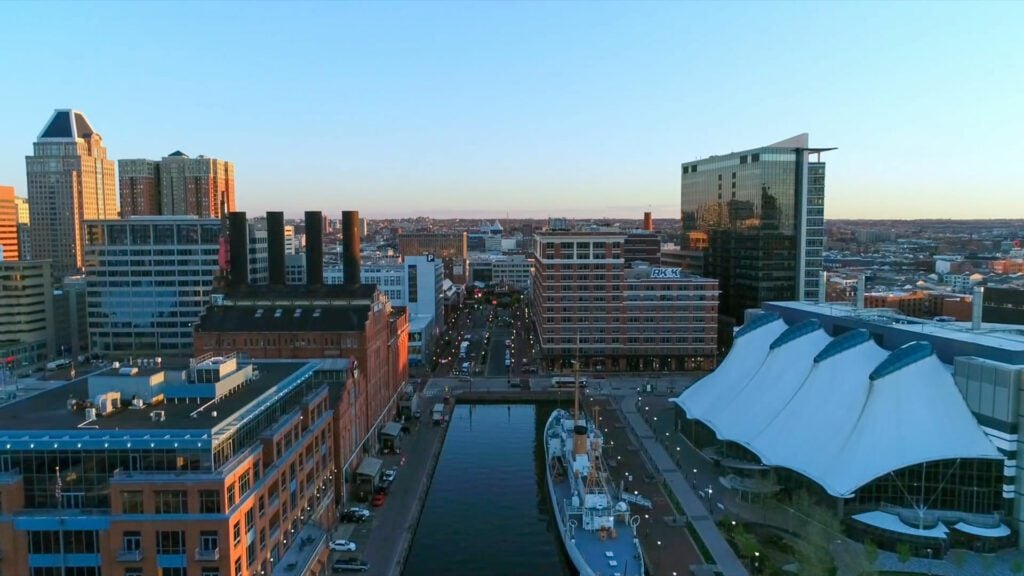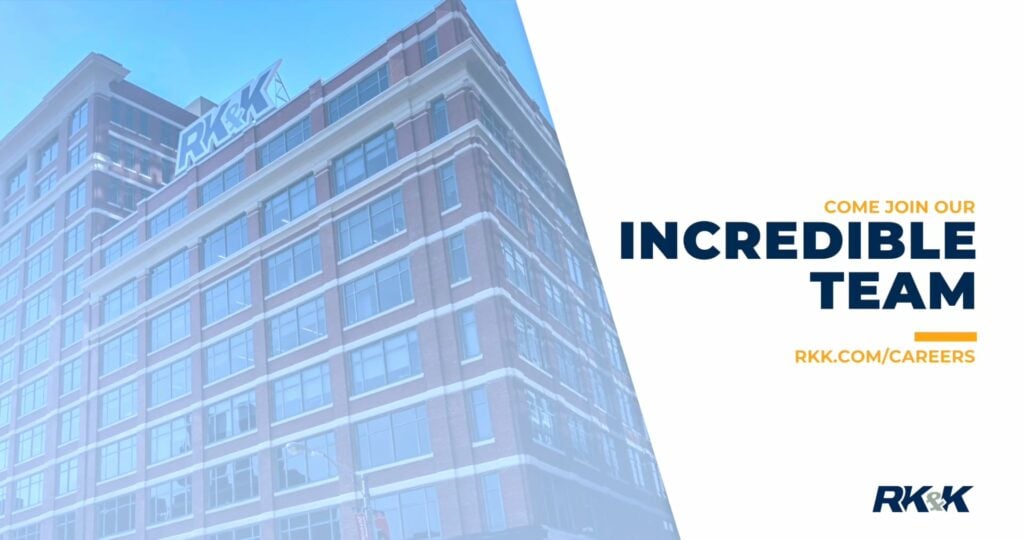Providing transformative solutions to communities in Northern Virginia is requiring a unique multidiscipline effort from multiple groups within RK&K. The Richmond Highway project is so big, hundreds of RK&K employees have spent roughly 80,000 billable hours on it so far. That’s roughly the length of a 40-year career!
As part of a joint venture, RK&K is currently providing Program Management services to Fairfax County, VA, to implement a nine-mile-long bus rapid transit (BRT) line along Richmond Highway (U.S. 1) between the Huntington Metrorail Station and Ft. Belvoir. The $730 million BRT project is a key part of Fairfax County’s plan to accommodate population and employment growth, address congestion, improve access, and foster economic development in communities along the corridor.
“The project will benefit the lowest-income and most racially diverse corridor of Fairfax County,” said Transportation Director Henry Kay, AICP. “County leaders see this project as part of a series of investments they need to make and supporting a community that they feel has been somewhat neglected.”
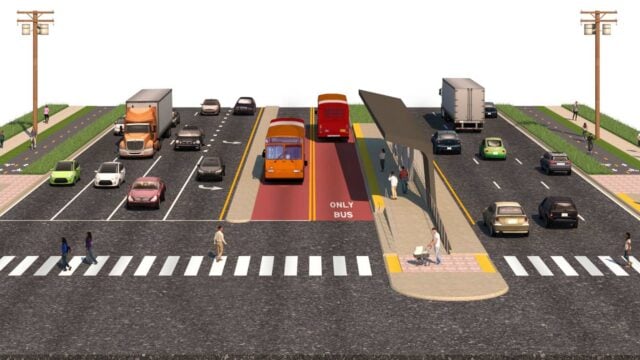
The $730 million BRT project is a key part of Fairfax County’s plan to accommodate growth and foster economic development.
The BRT system will operate in dedicated lanes in the median of Richmond Highway for most of the corridor, and will include either new architecturally distinctive stations, near-level boarding, off-board fare collection, and real-time passenger information signs.
“We’ve been working with VDOT (Virginia Department of Transportation) who owns Richmond Highway to adopt multimodal and transit-supportive standards, instead of focusing on automobile traffic,” said Project Delivery Leader Allison Berkheimer, PE. “Our client (Fairfax County) wanted to transform the corridor into a walkable and user, pedestrian, and bicycle friendly place.”
RK&K performed a traffic analysis to determine the needed improvements in the corridor. While predicted traffic growth is moderate, the combination of improvements and provisions for the BRT create significant demands along the corridor. An array of alternative intersection configurations were evaluated, with a traditional intersection configuration being selected.
Our team designed roadway improvements for VDOT to widen a three-mile stretch from as narrow as 60-feet to 178-feet or more to accommodate vehicle travel lanes, BRT lanes, buffered bicycle lanes, and widened sidewalks to support future development. This design required an intensive alignment study to lessen the impacts to adjacent properties, as well as consider improvements such as two proposed BRT stations and provisions for a densified “grid of streets” in the Woodlawn section of the corridor. Additional considerations included turn lanes, pedestrian movements, and access management.
The dedicated transitway sections consist of a total median width of 32 feet to 58 feet throughout the corridor. The roadway will be widened in some areas to accommodate the BRT transitway, and will include adding connections to walkways, trails, and bicycle facilities as well as streetscape improvements. The BRT will be operated with a fleet of specially branded BRT vehicles, and the project includes improvements to existing bus maintenance facilities to accommodate the BRT vehicles.
One of the more challenging aspects of the project is designing and managing the relocation of most of the buried and overhead utilities within the 3.7-mile-long project corridor. Most of the utilities including water mains, sanitary sewers, storm drains, electric and communication conduits needed to be relocated to outside of the center bus transit lane. RK&K is managing the relocation of those utilities and designing the relocation of approximately 20,000 LF of sanitary sewers up to 18” in diameter.
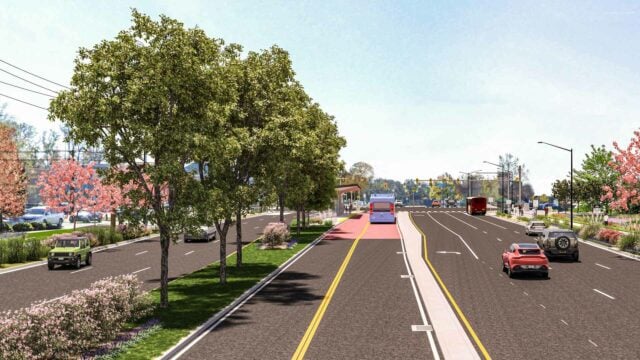
RK&K has helped Fairfax County work within current state roadway design standards to achieve a more walkable environment that is sensitive to the needs of future BRT riders.
Because a project goal is to transform the character of the corridor from suburban transitional to urban and walkable, RK&K developed innovative approaches to retrofitting the BRT running way, accommodating forecast auto demand, creating pedestrian-oriented station areas, adding cycle tracks, and integrating upgraded lighting and landscaping.
“RK&K’s Healthy Communities team worked with Fairfax County and VDOT to maximize the number of roadside trees. We also had to navigate challenges because of state standards for sight distances, because we need to make sure the trees don’t block the view of a turning vehicle,” Henry added.
The project is one of the first large-scale transportation projects to plan full compliance with more stringent Fairfax County stormwater regulations versus requirements from VDOT. Led by Laura Bendernagel, PE, ENV SP, our Water Resources team determined the design criteria for stormwater and drainage requirements, including phosphorus removal levels, nutrient credit options, and water quantity channel and flood protection control.
RK&K proposed management practices that could co-exist within the urban footprint, as part of the planned uses, or below ground. This included swales and bioretention planters within the landscape strips of the BRT medians and sidewalks, permeable pavement on the multi-use trail, and underground storage and treatment under landscape areas, sidewalks, and adjacent parking lots.
“Some of the stormwater facilities are going to have walking paths around the outside, some of the underground facilities have plazas on top. Others may have boulders for seating or to use for a community farmer’s market,” Allison noted. “We’re designing spaces that gives the county options for its use and provides more options for pedestrians, cyclists, and riders.”
RK&K has also helped Fairfax County work within current state roadway design standards to achieve a more walkable environment that is sensitive to the needs of future BRT riders.
“We’ve been creative and thought of ways to minimize the distance someone must walk to get to the transit service. We’re making the environment better, easier, and safer for all roadway users,” Henry said.
Henry and Allison noted another unique aspect of this project is it’s one of the few BRT projects nationwide that seeking funding through the Federal Transit Administration’s (FTA) “New Starts” Program. “New Starts” are projects with a cost of over $400 million.
Henry added the fact the project is seeking New Starts funding has shaped the design process.
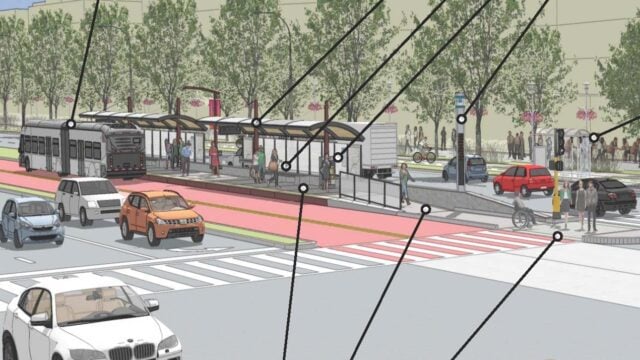
The BRT system will operate in dedicated lanes in the median of Richmond Highway for most of the corridor, and will include either new architecturally distinctive stations, near-level boarding, offboard fare collection, and real-time passenger information signs.
“It’s a very competitive program. FTA wants to be sure that every project they fund is well thought through and has a realistic budget and schedule,” he said. “It’s an opportunity for RK&K to get it on the ground floor and work a project through that process.”
“We were initially brought on to be a program management consultant. We thought we were going to go Design-Build, but after the client decided to go Design-Bid-Build they gave us the opportunity to be the Engineer of Record (EOR),” Allison added. “We’re providing program management as well as responsible for the final engineering documents.”
“It could have just been a few of us managing another design consultant, but instead we have had the opportunity to involve over 200 people from the firm,” Henry noted.
“We’ve worked to involve as many people from the company as we can. We have folks working on this project out of Baltimore, Richmond, Fairfax, Virginia Beach, DC, Virginia Beach, King of Prussia, and Raleigh. It’s been a terrific way to give everybody exposure to a mega BRT project,” they added.
RK&K’s Planning group shepherded the projects through the National Environmental Policy Act (NEPA) process, which included two separate documents, an Environmental Assessment for VDOT/FHWA and a documented Categorical Exclusion for Fairfax County/FTA. These efforts included detailed cultural resources analysis and supporting technical reports.
In addition, RK&K prepared technical materials for presentation at public meetings; compiled geotechnical data; coordinated with ongoing overlapping highway projects; and oversaw the development of project financing, governance, and options for project delivery. Other anticipated tasks over the course of the 10-year PMC contract include preparing, advertising, negotiating, monitoring, and managing design and construction contracts.
The project team is now providing final design services for the project including roadway, transitway and bike/pedestrian design; reconfiguration of the bus loop at the Huntington Metro station; storm drainage and stormwater management features; geotechnical design for bridge foundations and retaining walls; landscaping; and urban design.
“The county wants us on board all the way through to opening day,” Henry said. “We’re working hard every day to achieve the client’s 2031 completion.”
The team said they want to emerge from the project with a feeling that the people living there feel like their community was invested in.
“We want to leave the client and the community with a transformed corridor that serves and respects residents rather than just a throughway to somewhere else. Richmond Highway is a place that has its own vibrancy and diversity,” Henry added.
